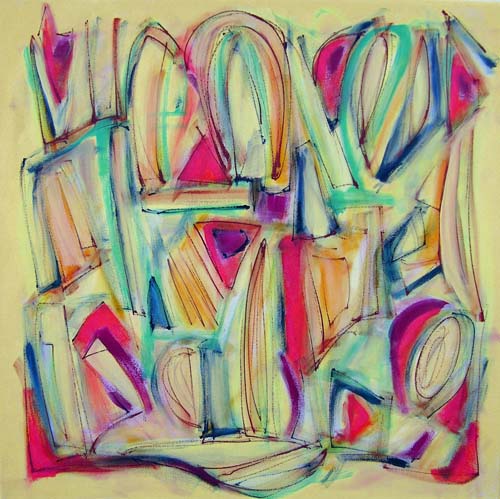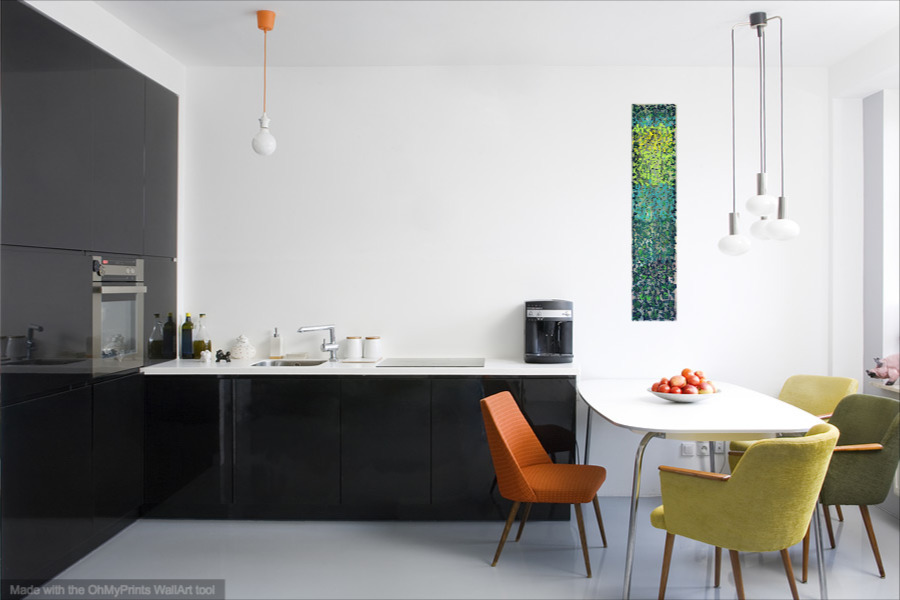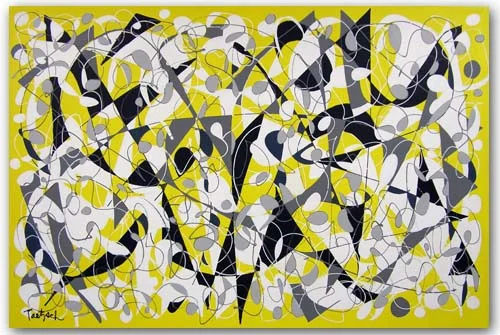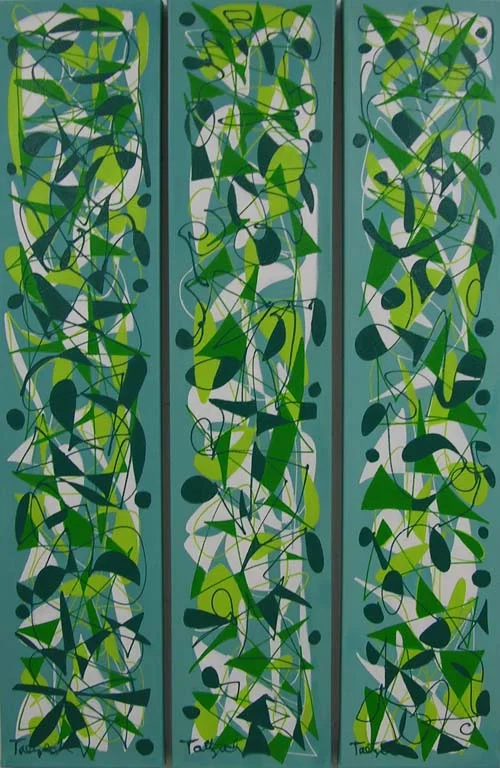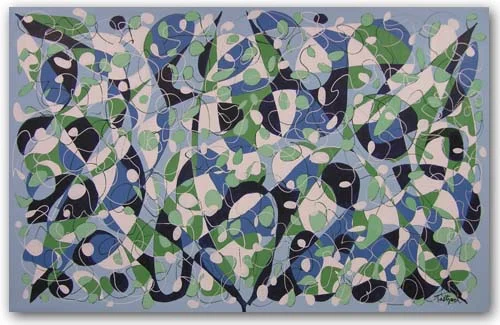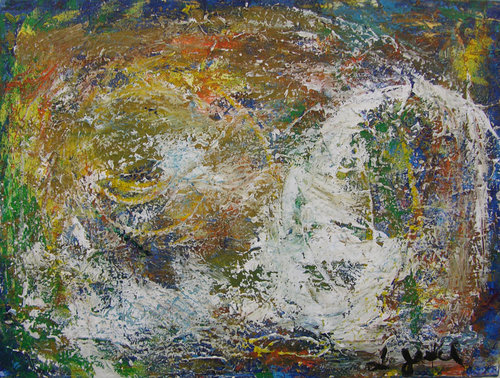As I worked on a new 30" x 30" abstract painting over several days, I took photos of it along the way. It was not a painting that came easily, and I'm still not sure if it's "finished." I will let it sit for a while before I sign it.
Here's the process step by step:
Step 1
I began by painting the whole canvas in a light lemon yellow, which comes across with a tint of green in this photograph. I was working loosely, brushing on some cadmium red deep, green gold, and a pale green here and there, blending them in.
Step 2
I added a lot more color here: cadmium red light, Prussian blue, and cadmium yellow medium. I also added in more of the pale green. Again, I painted loosely, working in an overall fashion to develop the composition. Then I drew lines in Prussian blue and brushed over them lightly to soften the effect.
Step 3
At this stage I drew sketchy lines with burnt sienna, and then brushed over them to blend them a bit with the background colors. I also used the pale yellow background color to soften a lot of the brighter yellows. Finally, I drew more lines with the Prussian blue. At this point I might have called the painting "finished." It felt good to me in many ways. But it wasn't quite there yet.
Step 4
I took a bold move here which changed the painting drastically and might not have worked: I filled in spaces with small circles of color: light Hansa yellow, medium yellow, and orange. I also added more cadmium red light in places, and more of the pale green. The image was now becoming more dense and solid. But it felt like I'd gone in the right direction.
Step 5
In this final step, I first painted the outer yellow area with cadmium yellow medium. That created a kind of "frame" for the central image. Then I began to fill in some of the small circles of color--first some orange, and then some of the Hansa yellow. Now I have to step back and study the canvas. The outer more golden yellow may be too strong. I might have contrived and controlled too much and lost too much of the sketchiness I had at the beginning.



